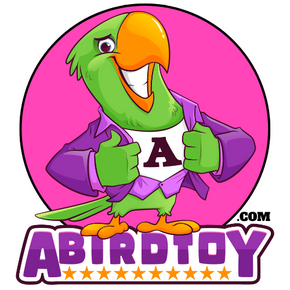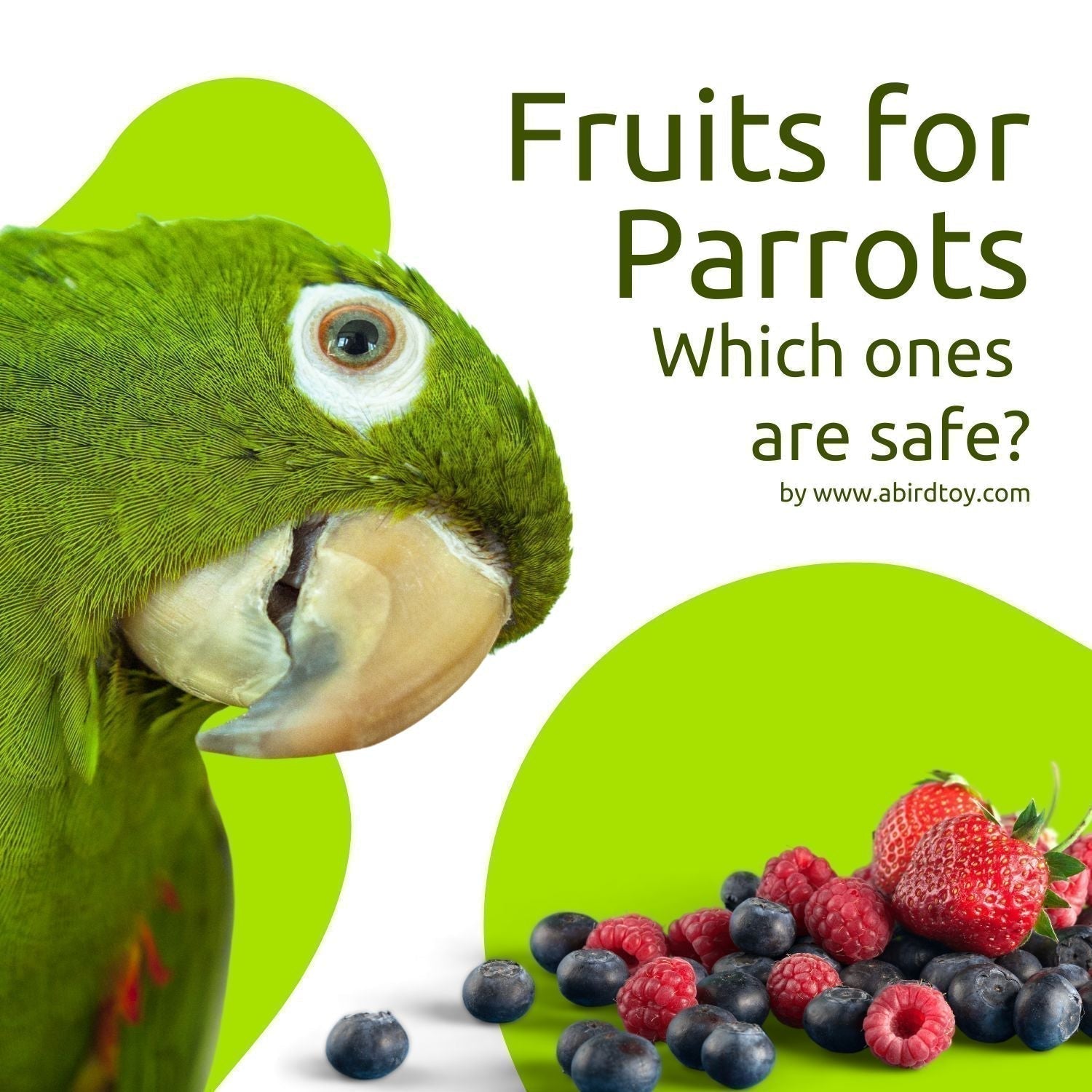Did you know that some wild parrots eat a variety of fruits? If you just got home from the farmer’s market with a bag full of fruit, you can actually share some of that all-natural goodness with your bird—there are just a few things to consider beforehand, including which fruits are safe and which should be avoided.
Below, let’s have a look at everything you need to know about fruit for parrots, including a handy printable checklist of safe and unsafe types of fruits for you to print and keep on hand.
Should your parrot eat fruit?
Yes, fresh fruit should ideally make up part of your parrot’s diet! The various fruits sold in our (super)markets are full of healthy vitamins, minerals, fiber, and other essential (micro)nutrients. Parrots can eat most of them safely, although it’s generally recommended that when it comes to fresh produce, you should focus mostly on vegetables.
The reason fruits should play a supporting role rather than being the stars of the show is sugar content. Yes, many parrots eat fruit in the wild, but don’t imagine them munching on apples and pears (unless they’ve managed to raid an orchard, which to the frustration of local farmers does happen): they usually only have access to wild fruits, which may or not even be ripe.
Foods like wild figs and foraged berries don’t contain all that much sugar. We can’t say the same for most fruits specifically bred for human consumption: we’ve spent years selectively cultivating these crops to satisfy our sweet tooth. We serve them at their ripest, which is also when their sugar content is the highest. Granted, this is also the case with a lot of vegetables (carrots and bell peppers, for example, are high in natural sugars), but not to the degree of foods like grapes, figs, or mangoes.
Anyway, what we’re trying to get at is that fruits are great for parrots. They’re nutritious and help keep our birds’ diets nice and varied. Definitely something to include, and you can absolutely offer Polly a strawberry (including the green top) if you just bought a pint for yourself. Just don’t overdo it: rather than leaving fruit and berries available at all times, try treating them more as snack foods.

Who knows what tropical fruit this little hanging parrot (genus Loriculus) is snacking on? Answer at the bottom of this post!
Safe & unsafe fruits for parrots
As we found out while putting together this guide, humans eat a lot of different fruits—we’ve tried to cover most common as well as uncommon types, but give us a shout if you’re missing one. The good news? Most can also be eaten by our birds! Just check the handy alphabetically ordered list below before feeding, or go for the printable version: Safe Fruits For Parrots.
Keep in mind we’re using the culinary definition of a fruit here. Foods like cucumber are technically also fruits, but they’re covered on our list of parrot-safe vegetables instead. Some fruits should be fed sparingly, such as those with high oxalic acid content (which can interfere with calcium absorption) and those that are highly acidic (can cause gastrointestinal upset if you feed a lot).
Tip: although the peels and skins of some fruits, like citrus, may be too high in essential oils to be healthy for our birds, others are very nutritious. If you buy organic, you can leave them on.
Legend
☣️ = oxalic acid content
🔪 = remove seed(s)
🍋 = highly acidic, only feed small amounts
|
Fruit name |
Parrot-safe? |
|
Yes |
|
|
Yes 🔪 |
|
|
Apricot |
Yes 🔪 |
|
Avocado |
No, all parts are toxic to parrots! |
|
Yes |
|
|
Blackberry (+ dewberry, boysenberry) |
Yes |
|
Yes |
|
|
Cherimoya (custard apple) |
Yes |
|
Cherry (+ sour cherry) |
Yes 🔪 |
|
Coconut |
Yes |
|
Cranberry |
Yes 🍋 |
|
Currant (all types) |
Yes |
|
Date |
Yes |
|
Dragon fruit (pitahaya) |
Yes |
|
Durian |
Yes |
|
Feijoa |
Yes ☣️ |
|
Fig |
Yes |
|
Goji berry |
Yes ☣️ |
|
Gooseberry |
Yes |
|
Yes |
|
|
Guava |
Yes |
|
Jackfruit |
Yes |
|
Kiwano (bitter melon) |
Yes |
|
Kiwi |
Yes |
|
Kumquat |
Yes 🍋 |
|
Lemon |
Yes 🍋 |
|
Lime |
Yes 🍋 |
|
Longan |
Yes |
|
Loquat |
Yes 🔪 |
|
Lychee |
Yes |
|
Mandarin (clementine, cutie, satsuma) |
Yes |
|
Yes |
|
|
Mangosteen |
Yes |
|
Melon (all types) |
Yes |
|
Monstera fruit |
Risky for humans and parrots except when 100% ripe ☣️ |
|
Mulberry |
Yes |
|
Nance |
Yes |
|
Olive |
No |
|
Orange (+ blood orange, grapefruit, pomelo) |
Yes (some are 🍋) |
|
Papaya |
Yes |
|
Yes |
|
|
Paw-paw |
Yes 🔪 |
|
Peach (+ flat peach, nectarine) |
Yes 🔪 |
|
Pear (+ nashi pear) |
Yes 🔪 |
|
Persimmon |
Yes |
|
Physalis (cape gooseberry) |
Yes |
|
Yes |
|
|
Plum (+ mirabelle, damson) |
🔪 |
|
Yes |
|
|
Prickly pear |
Yes, remove spines! |
|
Quince |
Yes 🔪 |
|
Rambutan |
Yes |
|
Raspberry (+ loganberry, wineberry, salmonberry) |
Yes ☣️ |
|
Red date (jujube) |
Yes |
|
Rosehip |
Yes |
|
Sea buckthorn |
Yes 🍋 |
|
Soursop (guanábana) |
Yes |
|
Star fruit |
Yes ☣️ |
|
Strawberry (+ pineberry) |
Yes |
|
Tamarillo (tree tomato) |
Yes |
|
Tamarind |
Yes 🍋 |
Did you know? We all know how quickly fresh fruit can spoil. If you’d like to always keep some fruity snacks on hand for your bird, their dried and freeze-dried versions make a good option. Freeze-dried fruit has almost all of its original nutrients, plus it maintains its vibrant color; dried fruit is more concentrated and therefore more sugary, but parrots do often like the chewy texture.
What other things can parrots eat?
Most parrot parents are aware by now that a simple dry seed mix won’t cut it for their bird, and also that nutritious fresh vegetables and fruits should make up a part of their diet. Your most important job in terms of bird nutrition, though, is to pick a high-quality daily staple.
If not seeds, then what? Well, most parrot owners opt for pelleted food nowadays. This can be a great option, but you do really need to pay attention to the ingredient list—manufacturers like to cut costs by including lots of fillers like corn or soy, which reduce the end product’s quality. Look for brands that don’t include these ingredients in large amounts.
You can also opt for a whole freeze-dried staple food, which some parrot owners feel is more natural than an extruded pellet. In any case, don’t forget to switch things up regularly to keep mealtimes fun. You can even offer food in a foraging box or toy, which help prevent these brainy birds from getting bored.
Conclusion
Offering a varied and nutritious diet containing plenty of fresh produce is one of the most important things you can do to help keep your feathered friend happy and healthy. That includes fresh fruits, which should be fed more sparingly than veggies because of their high sugar content but still make a great addition to your bird’s snack rotation. Almost all fruits are safe, and if you’re not sure, you can just check the list above!
PS: The hanging parrot in the photo is eating rambutan. As you can see on the list, this fruit is parrot-safe.





